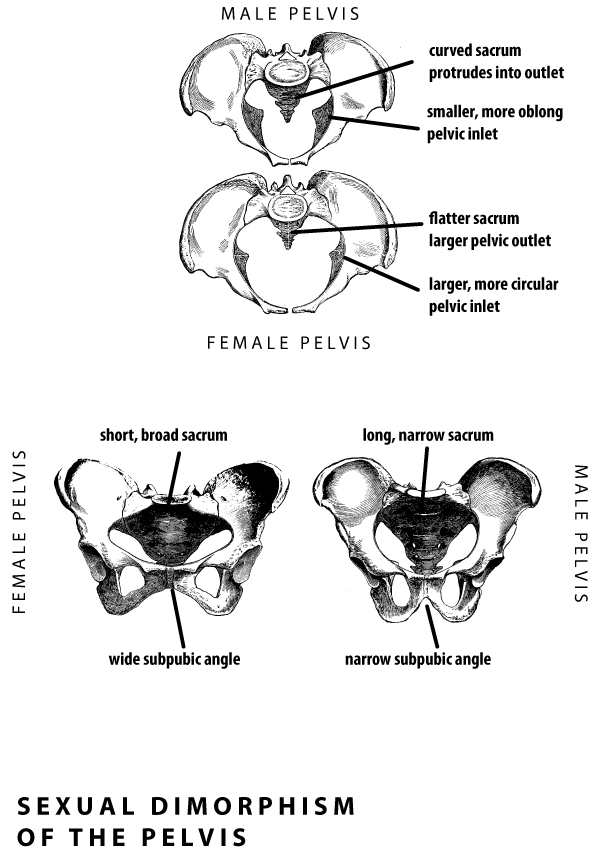Virtual lab: Sexual dimorphism of the human pelvis
The pelvis provides the most accurate indicator of osteological sex in the human skeleton. Its central role in the birth process means that the pelvis has several shape differences between individuals of female sex and male sex. Learning these features is valuable for forensic identification.
The lower part of the pelvis, called the true pelvis, constrains the birth canal in female individuals. The top of the true pelvis is defined by the pelvic inlet. The pelvic inlet is nearly circular in female pelvic anatomy, while it can be more oblong in male pelvic remains. The pelvis of male adults is overall larger, because the ilia (top part of the innominate bones) flare more extensively and the sacrum is longer.
Some other features of the pelvis tend to increase the size of the pelvic outlet in female individuals, thereby reducing the constraints that bone places upon the end of the birth canal. This area has some of the most notable differences in anatomy between individuals with male and female skeletal sex.
- Pubis. The anterior portions of the pelvic bones, called the pubes, come together at the pubic symphysis. The inferior borders of the pubes form an angle, which is wider (around 90 degrees) in individuals with female osteological sex, narrower (around 60 degrees) in those with male osteological sex.
- Greater sciatic notch. On the posterior border of each innominate bone, the greater sciatic notch is wider in individuals with female osteological sex, narrower in those with male osteological sex.
- Sacrum. This structure is wider and shorter, with less curvature in individuals with female osteological sex. It is longer and more curved in those with male osteological sex.
It is important to keep in mind that these differences are typological differences, defined by the average difference observed among samples of individuals with female or male osteological sex. Individuals of either sex may vary substantially from the typological form, and in fact individuals sometimes have intermediate morphology or features that more commonly characterize the opposite sex. Intersex individuals may exhibit either male-typical or female-typical morphology, or may be intermediate. It is also important to distinguish these typological differences from an individual's gender, which may differ from osteological sex.

- The human bone models in this virtual lab are based on scans of osteological specimens in the Biological Anthropology collection of UW-Madison.
Materials in this lab
Back to full list of virtual labs